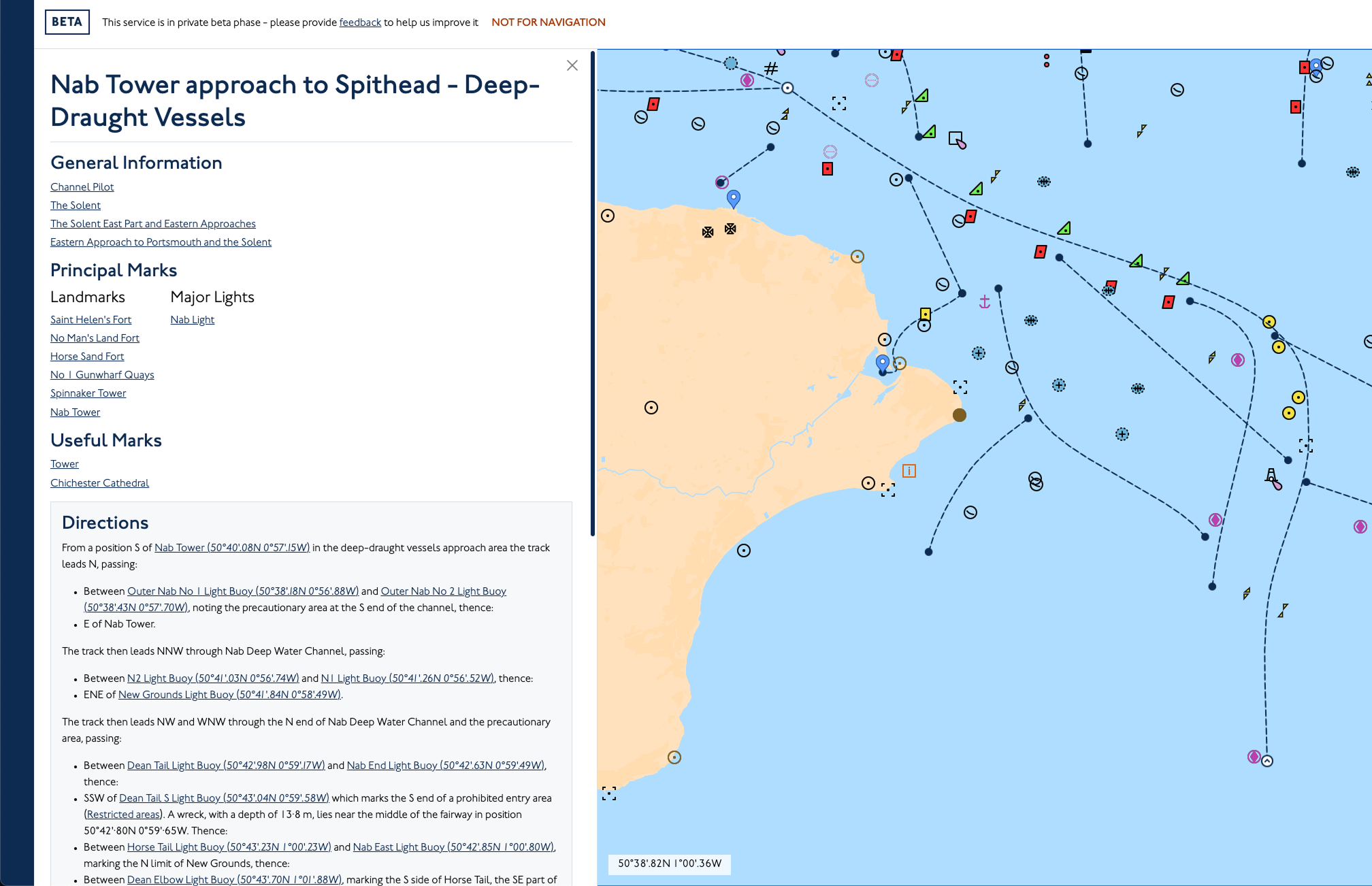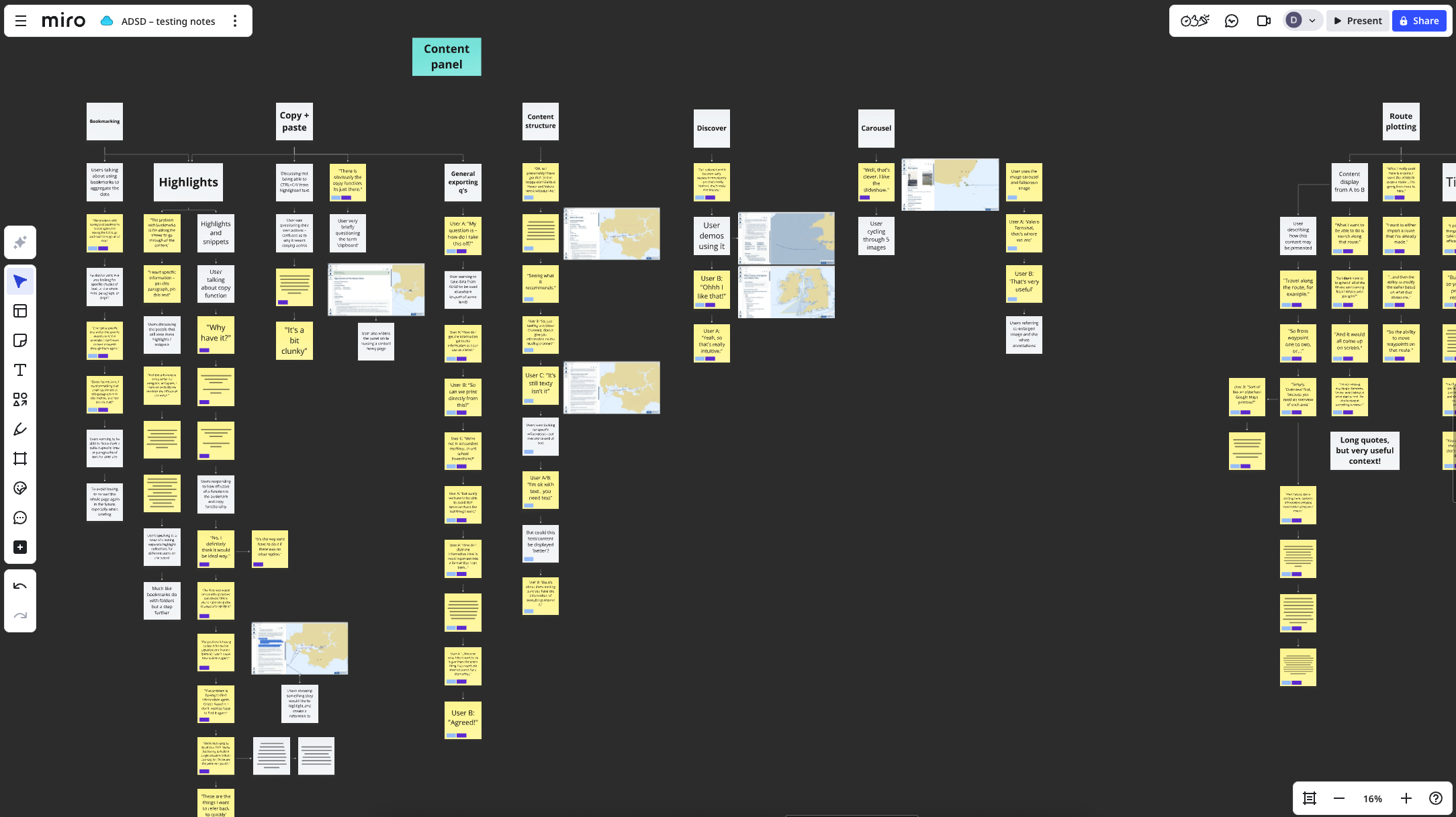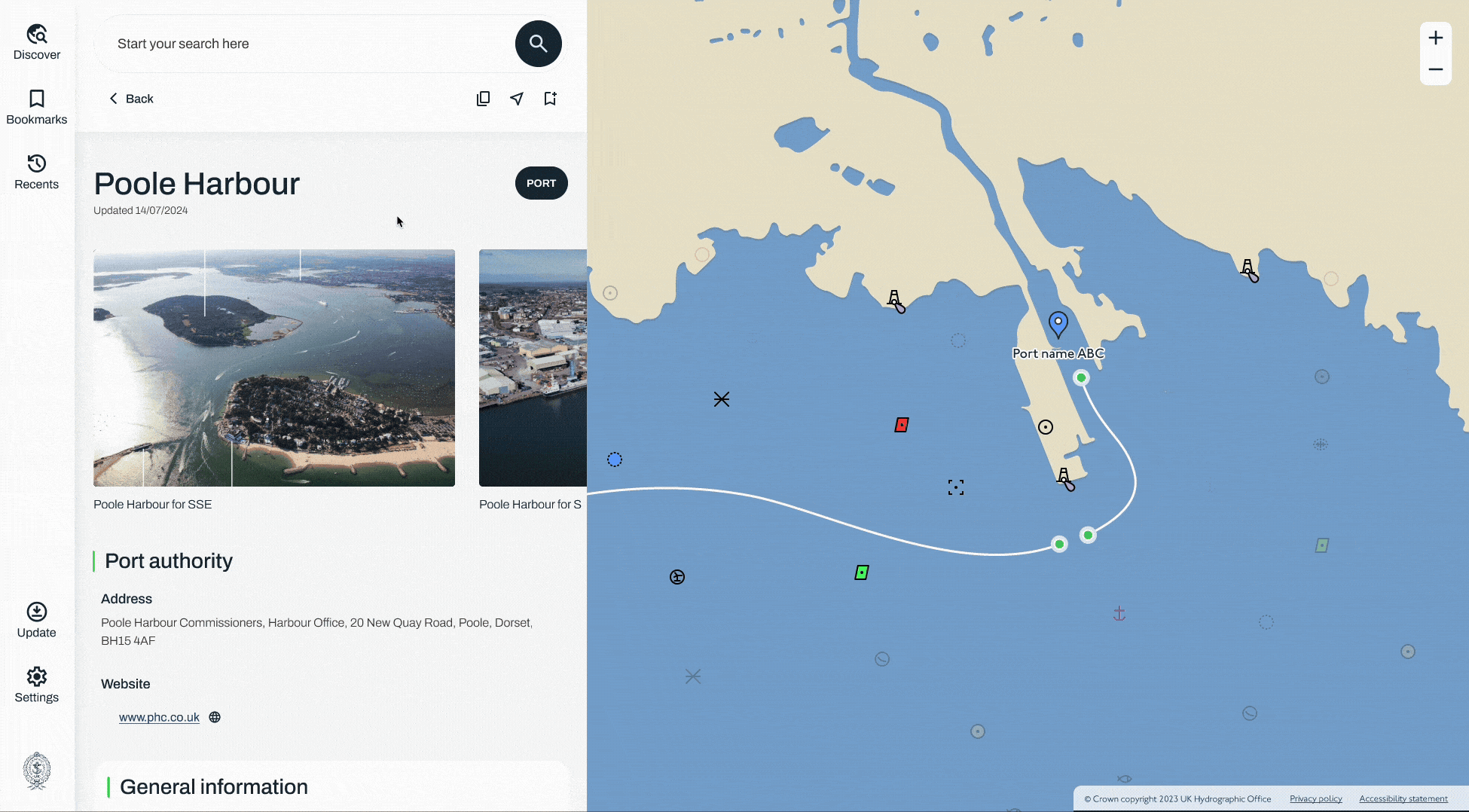Sailing Directions
At a glance
Challenge: Digitise Admiralty Sailing Directions, the global gold standard for SOLAS navigation.
Process: Co-designed with mariners and UKHO experts through agile, user-led sprints.
Outcome: Beta-ready product paving the way for a unified digital maritime platform.
Learnings: Earlier engagement with partners and teams is key to aligning technology, users, and strategy.
Introduction
For almost two centuries, mariners have relied on Admiralty Sailing Directions, a 72-volume series from the UK Hydrographic Office (UKHO). Recognised as the gold standard and required for SOLAS (Safety of Life at Sea) compliance, these books provide vital information for mariners around the world.
Each volume offers essential, up-to-date details on ports, approaches, anchorages, hazards, and navigational aids, forming the foundation of safe and compliant passage planning.

An example of some of the maritime charts the UKHO produces. These can appear in Sailing Directions books to help mariners navigate safely
The challenge
To transform the long-standing Sailing Directions books — relied on by mariners since 1829 — into a modern digital product for all SOLAS-compliant vessels.
The printed books had become costly and time-consuming to update, leading to inconsistent use across fleets. A previous attempt to digitise them as PDFs met compliance needs but failed to deliver a usable, efficient experience.
This project set out to fix those gaps by creating a truly digital, user-centred product that was easy to maintain, compliant, cost-effective, and ready for global distribution through UKHO’s partners and resellers.

Process and key activities
The project began by focussing on the Channel Pilot, the stretch of sea connecting the UK to France. It is one of the busiest and most complex maritime areas in the world. It was the perfect place to stress-test our ideas, rich with ports, hazards, lighthouses, and many more objects and data points.
Working in two-week sprints, we collaborated closely with in-house SMEs and mariners, testing regularly with users both remotely and on site at naval bases, colleges, and ports. Each iteration refined the experience of navigating content in a new digital format.

Weekly show-and-tells, crits, and workshops with the UKHO UX team helped us share learnings, solve design challenges together, and strengthen the team’s UX maturity across the organisation.
As the Admiralty’s flagship digital product, expectations were high. Our major milestone, the Sea Trial, took the Alpha version on board real vessels for hands-on use. The trial proved a success, giving us authentic feedback from real-world conditions and shaping future iterations.

Photo from onboard a chemical tanker with end users introducing us to the vessel
The long-term vision is for the new Admiralty Digital Sailing Directions (ADSD) to become a single geospatial platform for all UKHO maritime products — transforming what were once physical books into a cohesive, data-rich digital ecosystem.
The outcome
I left the project during its Beta phase, with most functionality and core user flows release-ready. The remaining challenge was the migration of content from 72 existing books, a complex process handled by a small but dedicated team of subject matter experts.
During Beta, we saw the product in the hands of naval officers, commercial captains, recruits, and international mariners. In a tr10aditionally slow-moving industry, introducing new technology required empathy, patience, and persistence.
By listening closely to users and championing their needs, we were able to guide the delivery team towards a product that met both user expectations and the UKHO’s ambitious goals, setting the course for the next generation of digital navigation.

A short demo of the new digital Sailing Directions product in action
Learnings
The project offered valuable lessons in collaboration, alignment, and early engagement across teams and partners:
- Engaging distributors and integrators earlier helps secure buy-in and ensures smoother integration within wider systems.
- Running workshops with third-party developers sooner helps surface technical constraints before they impact delivery.
- Holding user-centred design awareness sessions before kick-off builds shared understanding and alignment across teams.
Final thoughts
A complex project with countless data points, user groups, and stakeholders, yet one of the most rewarding. Seeing it come together and deliver real value for mariners worldwide made every challenge worth it.